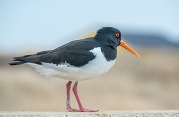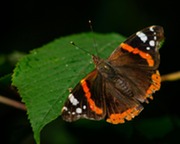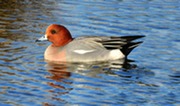|
Oystercatcher
A vocal, orange-billed wader. Although the Exe supports a juvenile population over summer, autumn is when most Oystercatcher will arrive to the Exe, migrating from their arctic breeding grounds to spend the milder winter with us.
 Red Admiral
You may be surprised to know that some butterflies such as this one continue flying into October and November making the most of late-flowering buddleia, ivy and rotting fruit. Red Admiral are a large butterfly with a strong flight, look out for their red markings against a dark wing with white spots.
 Wigeon
These are one of the first ducks on the Exe to return from their summer breeding grounds. Male wigeons (drakes) make a loud and musical "whee-ooo" sound, while showing off a chestnut brown head with golden tuft and pale blue bill.
Mudbank and Bowling Green Marsh are Wigeons favourite spots to be on the Exe, and when they are present, there will be hundreds!
 Penny Bun
Autumn is a great time of year to be spotting all kinds of fungi such as this Penny Bun/ Porcini. In the UK we have over 15,000 species, varying widely in size and form.
Mushrooms are the fruiting body of a much larger and underappreciated mycelial network. They thrive in damp environments, reproducing using spores.

|